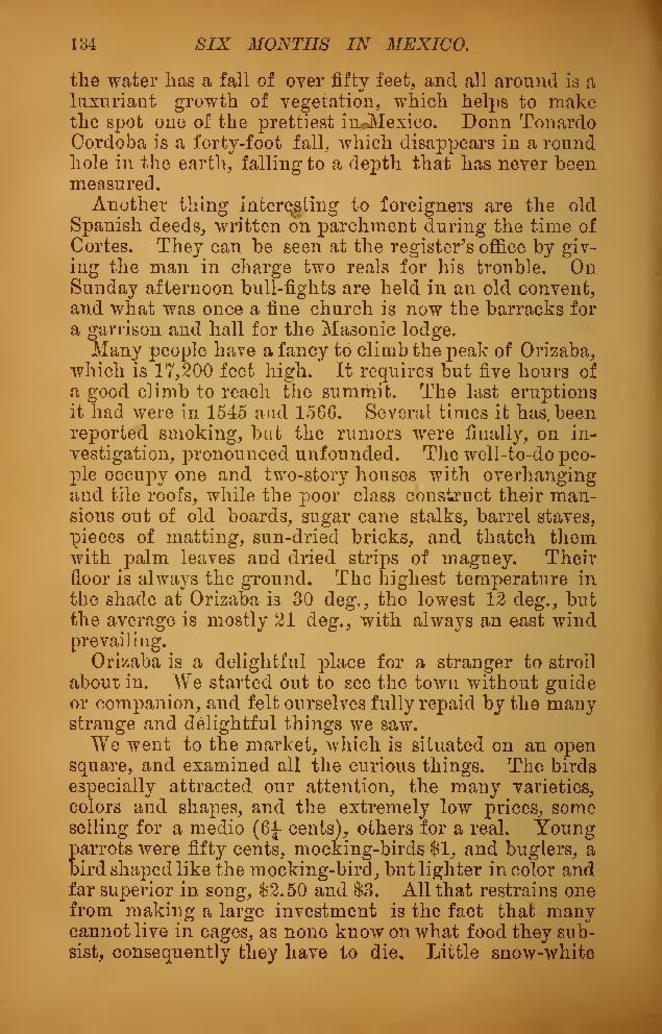the water has a fall of over fifty feet, and all around is a luxuriant growth of vegetation, which helps to make the spot one of the prettiest in Mexico. Donn Tonardo Cordoba is a forty-foot fall, which disappears in a round hole in the earth, falling to a depth that has never been measured.
Another thing interesting to foreigners are the old Spanish deeds, written on parchment during the time of Cortes. They can be seen at the register's office by giving the man in charge two reals for his trouble. On Sunday afternoon bull-fights are held in an old convent, and what was once a fine church is now the barracks for a garrison and hall for the Masonic lodge.
Many people have a fancy to climb the peak of Orizaba, which is 17,200 feet high. It requires but five hours of a good climb to reach the summit. The last eruptions it had were in 1545 and 1566. Several times it has been reported smoking, but the rumors were finally, on investigation, pronounced unfounded. The well-to-do people occupy one and two-story houses with overhanging and tile roofs, while the poor class construct their mansions out of old boards, sugar cane stalks, barrel staves, pieces of matting, sun-dried bricks, and thatch them with palm leaves and dried strips of maguey. Their floor is always the ground. The highest temperature in the shade at Orizaba is 30 deg., the lowest 12 deg., but the average is mostly 21 deg., with always an east wind prevailing.
Orizaba is a delightful place for a stranger to stroll about in. We started out to see the town without guide or companion, and felt ourselves fully repaid by the many strange and delightful things we saw.
We went to the market, which is situated on an open square, and examined all the curious things. The birds especially attracted our attention, the many varieties, colors and shapes, and the extremely low prices, some selling for a medio (6¼ cents), others for a real. Young parrots were fifty cents, mocking-birds $1, and buglers, a bird shaped like the mocking-bird, but lighter in color and far superior in song, $2.50 and $3. All that restrains one from making a large investment is the fact that many cannot live in cages, as none know on what food they subsist, consequently they have to die. Little snow-white
